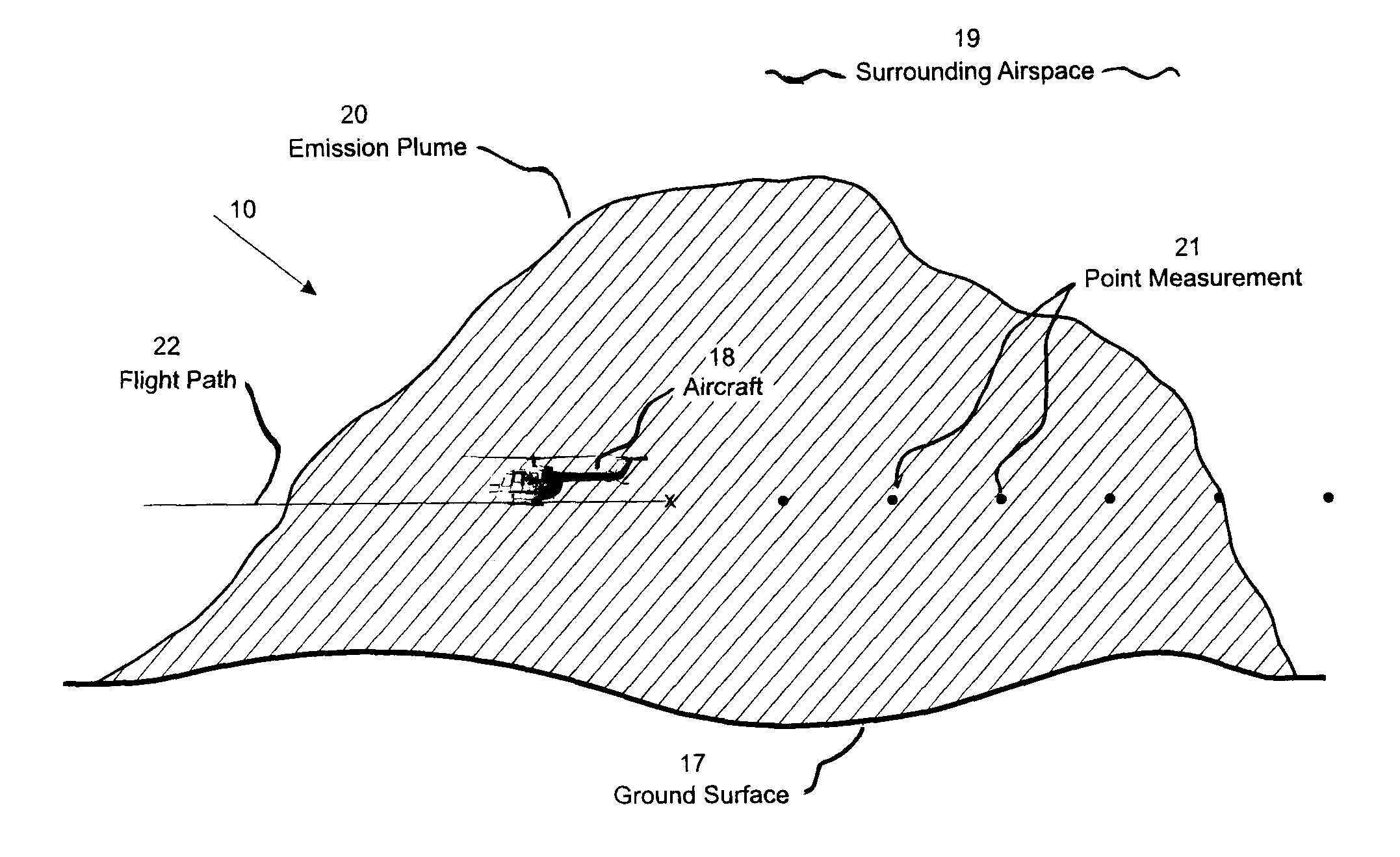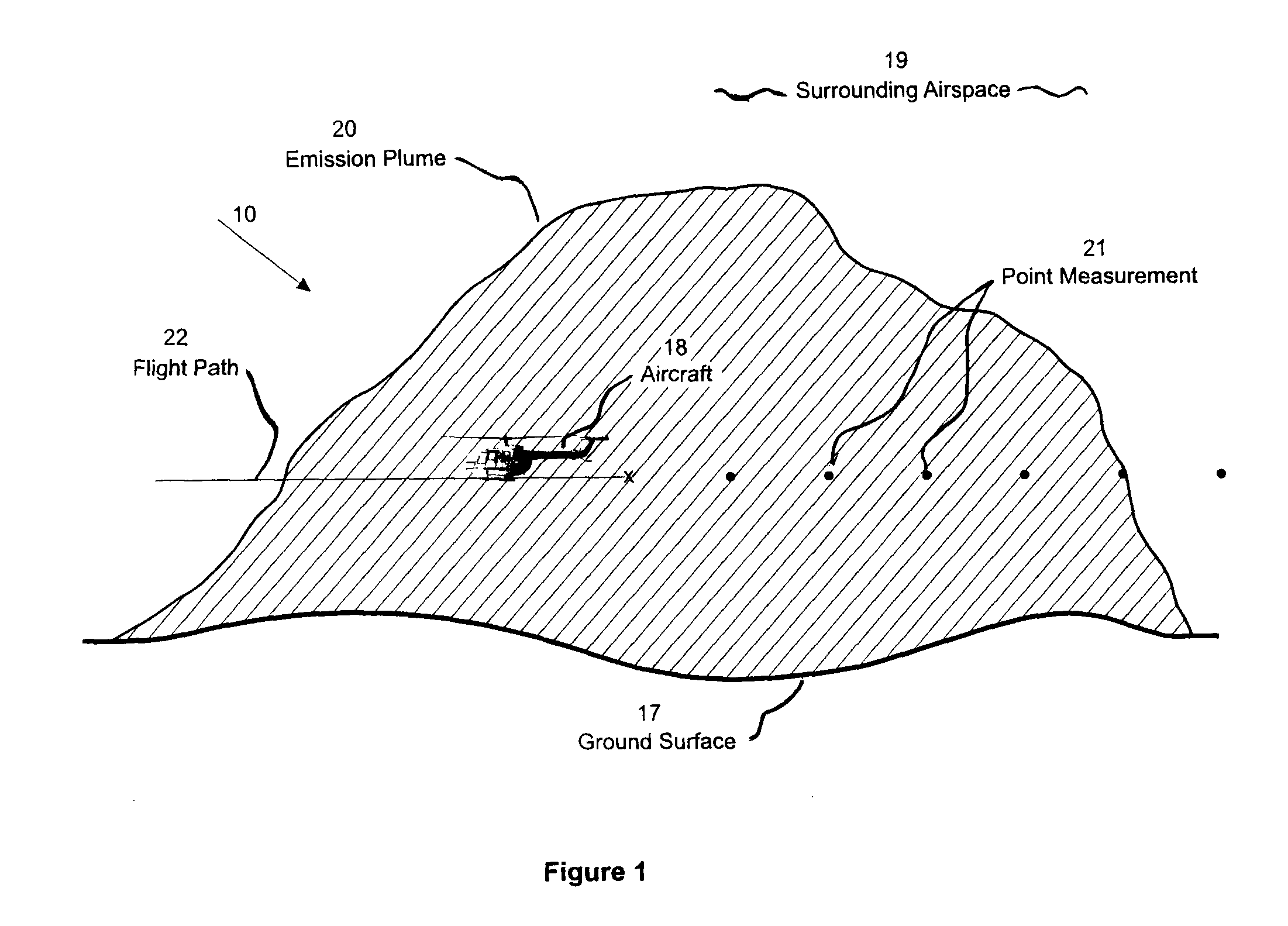Mapping concentrations of airborne matter
a technology of airborne matter and concentration, applied in the field of methods, can solve the problems of inability to determine the variation of airborne matter concentration near a diffuse source, inability to use tracer techniques, and limited placement,
- Summary
- Abstract
- Description
- Claims
- Application Information
AI Technical Summary
Benefits of technology
Problems solved by technology
Method used
Image
Examples
Embodiment Construction
[0043]The present invention relates to a method of mapping concentrations of airborne matter in an emission plume using point sampling.
[0044]The following description is of a preferred embodiment.
[0045]The present invention provides a point measurement method of mapping airborne concentrations of airborne matter in an emission plume using point sampling. The method involves measuring airborne matter at one or more than one identified locations using an optical sensing instrument (OSI) mounted on a vehicle operatively connected with one or more than one matter samplers mounted on the vehicle. The one or more matter samplers are passed along one or more measurement paths through an airspace to be sampled, and one or more concentration measurements are obtained. A geographic position and an altitude value is established for each of the one or more identified locations, and a concentration measurement for the airborne matter for each identified location is then determined. The concentra...
PUM
| Property | Measurement | Unit |
|---|---|---|
| time | aaaaa | aaaaa |
| speed | aaaaa | aaaaa |
| height | aaaaa | aaaaa |
Abstract
Description
Claims
Application Information
 Login to View More
Login to View More - R&D
- Intellectual Property
- Life Sciences
- Materials
- Tech Scout
- Unparalleled Data Quality
- Higher Quality Content
- 60% Fewer Hallucinations
Browse by: Latest US Patents, China's latest patents, Technical Efficacy Thesaurus, Application Domain, Technology Topic, Popular Technical Reports.
© 2025 PatSnap. All rights reserved.Legal|Privacy policy|Modern Slavery Act Transparency Statement|Sitemap|About US| Contact US: help@patsnap.com



